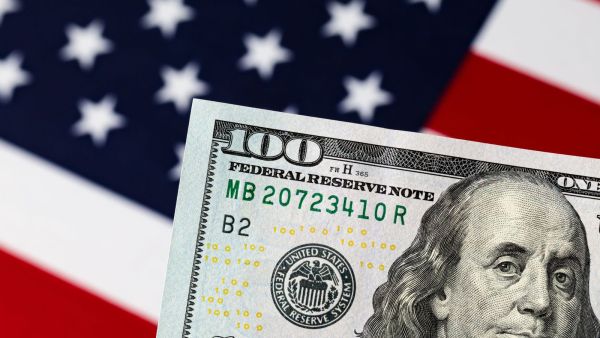US bonds market trapped between US debt ceiling crisis, high-interest rates
ALBAWABA – The United States (US) bonds market is broiling with uncertainty, Bloomberg reported Saturday, with the US debt ceiling crisis brewing on one hand and the economy on the other hand, dealing with rising interest rates and inflation slowing ever so slightly.
Generally, stronger bond yields, growing ambiguity in the market, uncertainty in the economy, and the woes of a potential national default on payments, all make for an unclear outlook on the future of the US economic landscape.
Several vital economic reports, Such reports include jobless claims, Personal Consumption Expenditures (PCE) indexes, and consumer sentiment reports, are to be released this Thursday and Friday. Other reports are coming out on May 30, including the S&P Case-Shiller home price index and the Consumer Confidence index, according to the Market Watch website.
These reports, and others, Bloomberg underlined, will gauge the strength of America’s economy.
So far, the New York-based news outlet says that there is a 40 percent chance that the US Federal Reserve Board (Fed) will hike interest rates in June.
They estimated a quarter-point raise after the Fed convenes next month.
While higher interest rates usually mean higher bond yields, it also sometimes means a more stagnant economy. Borrowing costs rise and trade loses traction, especially with countries that settle foreign transactions in the US dollar.
Moreover, in a statement to Bloomberg, portfolio manager at Brandywine Global Investment Management Jack McIntyre said that the “Markets are trying to look beyond the debt ceiling and to the economy, inflation and how it influences the Fed.”
“Is it a pause and then a hike again, or do they eventually cut?” he added.
The entire market is looking to gain a firmer grasp of the economic situation in the US in order to plan for the next few steps.
Put together, the economic factors at play right now do not bode well for an upcoming relief in the next few days.
US debt ceiling talks fell through, again
Meanwhile, talks between President Joe Biden’s Administration and Congress over the US debt ceiling crisis just hit another brick wall, as reported by Investing.com.
US House of Representatives Speaker Kevin McCarthy explicitly stated that he will be talking with Biden himself. Not with the members of the president’s cabinet, according to Bloomberg.
Should the US administration and Congress not reach a deal on raising the debt ceiling before the deadline of June 1, the government will not be able to pay its bills.
Janet Yellen, former chairwoman of the Fed, repeatedly warned that the US may not be able to pay its bills come June, as reported by CNBC Arabia.
The last time the US hit the debt ceiling was in 2011. It shocked markets, especially stocks, and affected retirement savings. It also was the first time that the US credit rating was ever downgraded, according to CNBC Arabia.
Though the government was able to avoid a default at the time, the delay in raising the ceiling hurt the economy. The crisis took months to recover from, Yellen said.

The United States reached the debt ceiling again, at $31.4 trillion, in January.
Another crisis brews as US debt ceiling talks continue
All the while, the treasury’s cash pile is running out.
The high-interest rates increased the pay-out on short-term US debt instruments. This has contributed to draining the treasury’s funds, Bloomberg reported.

The government’s cash balance fell to $57.3 billion on Thursday. It stood at about $68.3 billion the day before.
In an official statement on Friday, the US Treasury Department said it has run through almost all of its authorized extraordinary measures allocations as of May 17. Only about $92 billion is left at the department's disposal.
This underscores the importance of resolving the government-congress standoff as soon as possible.
Should the US fail to pay its bills, investors may move their funds to other markets and invest in bonds in other countries, CNBC Arabia said in an analysis published Saturday.
It could also trigger a large-scale decline in stock prices and trading. As well as a crash in overall financial indexes, as it did in 2011.
The market is already volatile in anticipation.
Back then, the Standard and Poor (S&P) 500 index dropped 15 percent, according to Goldman Sachs.
Such an event will have repercussions far beyond the US. It will disrupt international trade and economies, and damage investor confidence in US bonds.
It will also raise the costs of funding internal US federal debt in the future, CNBC Arabia reported.
If Congress fails to raise the US debt ceiling, Bloomberg estimates that the Treasury’s extraordinary measures would be exhausted within two weeks from now.
The government’s ability to pay its debts and bills ultimately comes down to whether the treasury has enough cash.
According to Bloomberg, the government’s coffers have dropped to the lowest level since December 2021. Hence the concern, that the treasury will run out of funds by early next month if the debt limit isn’t raised or suspended before then.








